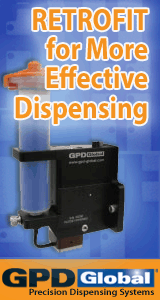Printed Circuit Board Assembly & PCB Design Forum
SMT electronics assembly manufacturing forum.
- SMTnet
- »
- Electronics Forum
- »
- PCB Through Hole Size for Lead Free
PCB Through Hole Size for Lead Free
Views: 8185
![]() Hello all, we are having issues with some specific package ...
- Nov 07, 2007
by
jdumont
Hello all, we are having issues with some specific package ...
- Nov 07, 2007
by
jdumont
![]()
![]()
![]() I have not seen hold size as an issue when switching Sn/Pb t...
- Nov 08, 2007
by
PeteC
I have not seen hold size as an issue when switching Sn/Pb t...
- Nov 08, 2007
by
PeteC
![]()
![]()
![]() Hole size may not have been an issue for you because your ho...
- Nov 08, 2007
by
jdumont
Hole size may not have been an issue for you because your ho...
- Nov 08, 2007
by
jdumont
![]()
![]()
![]() 60% ratio would be great start. that is what we typically sh...
- Nov 08, 2007
by
RDR
60% ratio would be great start. that is what we typically sh...
- Nov 08, 2007
by
RDR
![]()
![]()
![]() Josh: Your 0.009" [0.228 mm] clearance should be fine. The m...
- Nov 08, 2007
by
davef
Josh: Your 0.009" [0.228 mm] clearance should be fine. The m...
- Nov 08, 2007
by
davef
![]()
![]()
![]() Did the PTH barrel ends in massive copper clad ?
If yes thi...
- Nov 08, 2007
by
JOSEPH
Did the PTH barrel ends in massive copper clad ?
If yes thi...
- Nov 08, 2007
by
JOSEPH
![]()
![]()
![]() We design and assemble PCB's and use a min of .015 thou over...
- Nov 09, 2007
by
cadpac
We design and assemble PCB's and use a min of .015 thou over...
- Nov 09, 2007
by
cadpac
![]()
![]()
![]() Thanks for all the great suggestions guys. We do not have to...
- Nov 09, 2007
by
jdumont
Thanks for all the great suggestions guys. We do not have to...
- Nov 09, 2007
by
jdumont
![]()
![]()
![]() Try raising the part off the board a little. I bet this wil...
- Nov 09, 2007
by
Hussman
Try raising the part off the board a little. I bet this wil...
- Nov 09, 2007
by
Hussman
![]()
![]()
![]() Are you thinking for the soon to be displaced air to be able...
- Nov 09, 2007
by
jdumont
Are you thinking for the soon to be displaced air to be able...
- Nov 09, 2007
by
jdumont
![]()
![]()
![]() Josh: 2222 will meet your requirements. 2221 is a companion ...
- Nov 10, 2007
by
davef
Josh: 2222 will meet your requirements. 2221 is a companion ...
- Nov 10, 2007
by
davef
![]()
- SMTnet
- »
- Electronics Forum
- »
- PCB Through Hole Size for Lead Free







